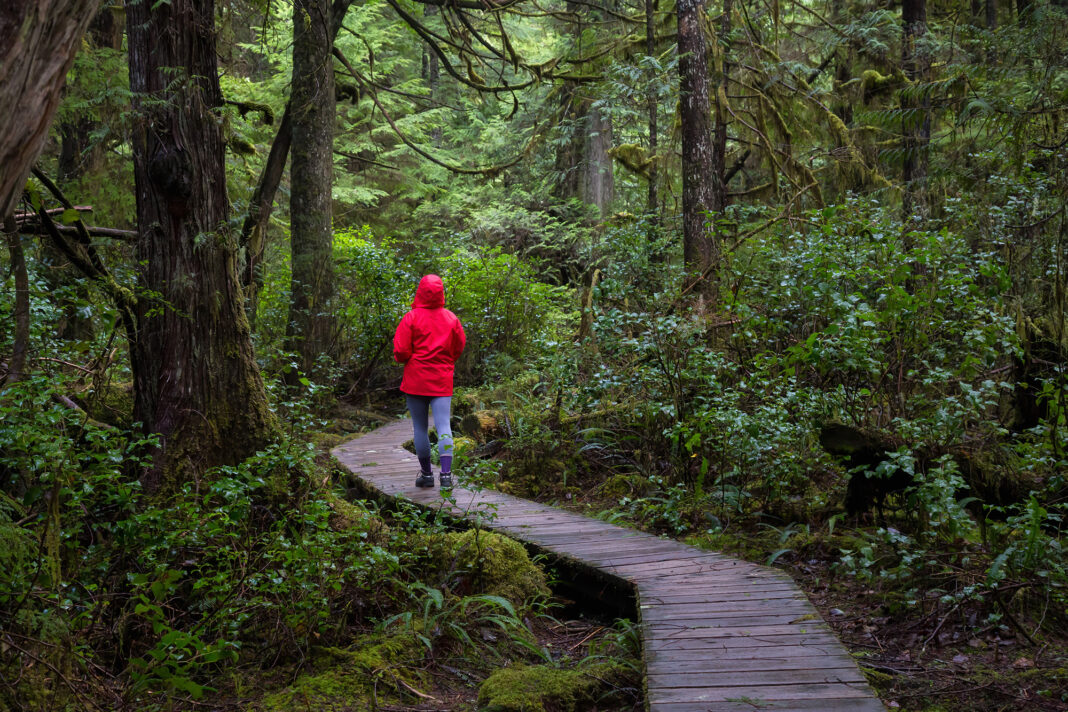Being in the great outdoors provides so many benefits for your mind and body. But what if you could leverage the power of science-backed information to give your health even more of a boost while you’re soaking up the best that Mother Nature has to offer? Based on research and the latest studies, here’s how you can take the already amazing benefits of being in nature and amplify them to a whole new level.
IMPROVE YOUR ZZZ’S
If you tend to toss and turn at night, then soaking up some sun during the day could be the ticket to better slumber.
That’s because light, especially natural daylight, is the biggest factor in setting your body’s sleep-wake cycle, otherwise known as circadian rhythm. This 24-hour internal clock is driven by an area in the brain called the suprachiasmatic nucleus (SCN), which responds to light and darkness to regulate wakefulness, hunger, and even body temperature. Sunlight shifts your internal clock, telling your body when it’s time to get up, and in turn, when it’s time to go to bed.
“Morning sunlight acts like the ultimate wake-up call for your circadian rhythm,” explains sleep expert Kelly Murray. “The SCN uses light to figure out what time of day it is. When your eyes catch those morning rays, it sends a signal to the brain to decrease melatonin production (sleepy hormone) and increase cortisol levels (alert hormone). This helps set the tone for your body’s daily cycle, keeping you awake during the day.”
How to maximize it
Grab those sun rays ASAP by going for a morning walk. “Try to spend a minimum of 10 minutes, ideally 30 minutes, outside within an hour of waking up,” suggests Murray. “This is prime time for resetting your internal clock.” Then, aim to get out for 10-minute doses of sun exposure — what Murray calls “sun snacks” — throughout the day, such as mid-day and early evening.
Cloudy skies? Get out the door anyway — you’ll still get a bigger dose of natural light (up to 10 times more) than you would inside. “Natural light, even when filtered through clouds, contains a full spectrum of wavelengths that our bodies need to regulate the circadian rhythm,” says Murray.
SCORE MAJOR MENTAL HEALTH BENEFITS
Ever notice you feel happier after hanging out in the park or spending time by the ocean? You can thank Mother Nature. A growing body of research has shown that spending time in nature delivers a ton of mental health benefits, from boosting your mood to reducing stress and anxiety.
For instance, a 2020 study in Frontiers in Psychology found that just 10 to 50 minutes in a natural setting reduced stress and improved well-being in college students, while another 2020 study out of Japan revealed that “forest bathing” had therapeutic benefits, particularly in those suffering from chronic stress.
And while it’s certainly not a cure-all, frequent doses of green space may also help with depression. A 2015 study by Stanford University found that when participants walked for 90 minutes in either an urban area or a natural setting, those who strolled through nature had greater decreased activity in the area of the brain associated with depression.
How to Maximize it
Take your workouts from the gym to a lush park or wooded area for a double dose of mental health benefits. According to a 2024 study by King’s College London, in which data was collected from 2000 participants, areas with a lot of natural features like trees, waterways, flowers, and wildlife provided greater mental well-being than those with fewer natural features. So grab your resistance bands and light weights, or just use your bodyweight, and hit up an area with plenty of trees—the more biodiverse, the better.
GET A BETTER WORKOUT
If you’re used to grinding it out on the treadmill, this is your sign to go hiking instead. The uneven terrain of hiking trails engages more muscles than a flat surface, making you work harder and thus, burning more calories (up to twice as many, in fact).
“With normal walking you’re limited in the variations of your gait cycle, so if you’re walking on a treadmill for a certain amount of time, you’re going to have a similar pattern throughout,” says Daniel Warwick, MSc, who specializes in biomechanics, rehab, and performance. “[When hiking] your body must adapt and absorb force in different positions. You’re going up different gradients. You might be moving side to side. So overall, biomechanically, you’re getting a lot more bang for your buck over just walking straight.”
How to Maximize it
Find a hiking trail with some challenging inclines. You’ll torch even more calories and get a more effective lower body workout to boot, since hills require more muscle recruitment from the quads, hamstrings, and glutes.
“Going uphill and downhill, we’re absorbing more force and producing more force when we step, which takes more recruitment of muscles,” says Warwick. “The more muscle recruitment, the more need for the heart to pump blood around the body. And when the heart rate is elevated, we burn more calories nearly across the board.”
You may also like: Using Nature as Your Playground

Read This Story in Our 2024 Summer Outdoor & Travel Issue
Featuring Canadian Taekwondo Olympian, Skylar Park. Must-visit adventure destinations across Canada. Your best trail running season ever with FAQs and threshold training plans. How (and why) gravel biking can rule your summer. Essential preparation to stay injury-free during hikes. Zero-waste your hiking and camping trips like a pro. Treat yourself with a Rustic Strawberry Chocolate Tart or Dairy-Free Vanilla Ice Cream, and so much more.

















